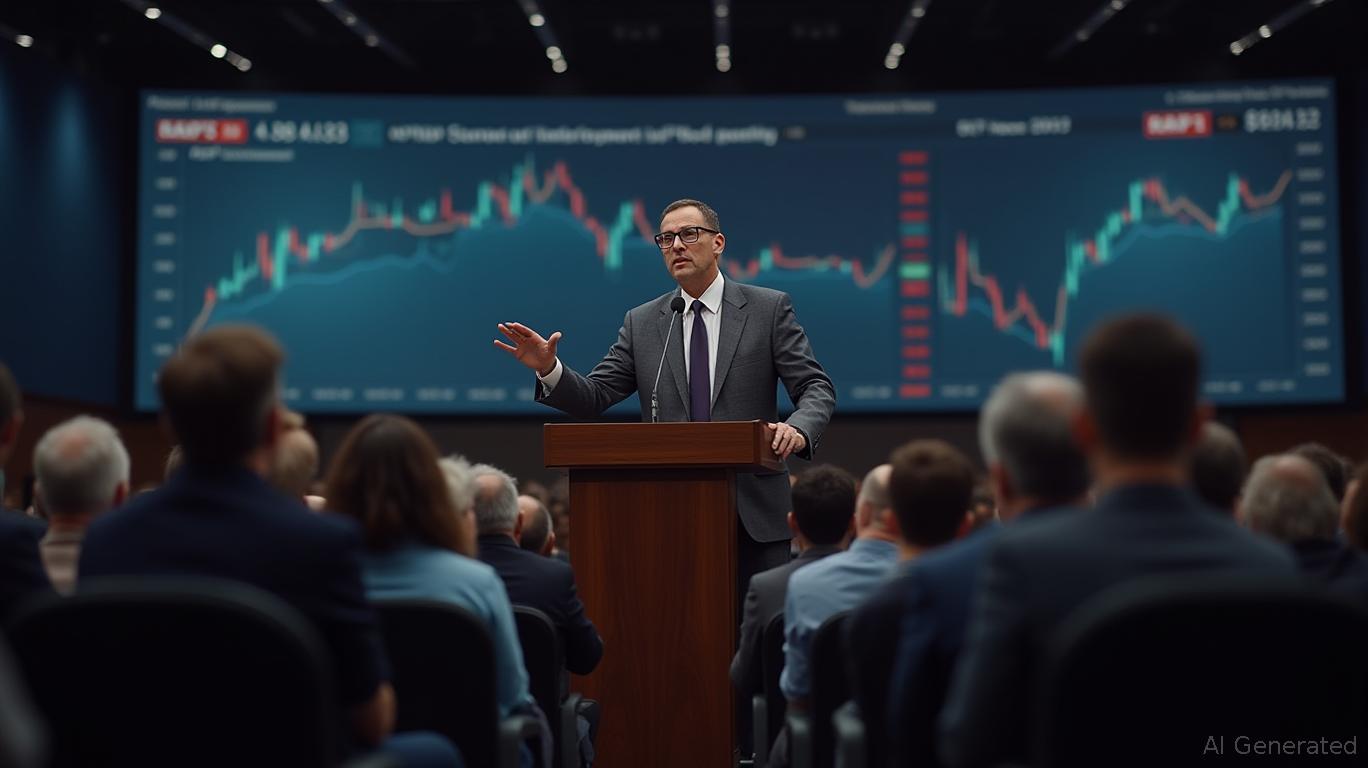Bitcoin Updates Today: Is It a Bull Run or an Economic Slowdown? Cryptocurrency Faces Major Macroeconomic Turning Point
- Crypto markets face a critical juncture as a bull rally clashes with bearish macroeconomic forecasts, driven by institutional inflows and pro-crypto policies. - Analyst Willy Woo warns the next bear market may stem from a broader economic downturn (e.g., 2008-style crash), not traditional crypto cycles, citing GDP, unemployment, and spending risks. - Bitcoin's price cycles appear decoupling from the four-year halving pattern, now more influenced by U.S. dollar strength, Fed policies, and global liquidity
The cryptocurrency sector is at a critical crossroads, with a strong upward trend challenging negative macroeconomic predictions and igniting discussions about whether the bull market can persist or if a downturn is imminent. Market experts and investors are divided, with some encouraged by significant institutional investments, while others remain wary due to warnings of a possible bear market driven by the broader business cycle.
Bitcoin (BTC) and various altcoins have climbed to unprecedented levels, largely propelled by widespread institutional participation, including spot ETFs and crypto treasury companies, such as

Woo’s perspective is based on the increasing connection between crypto markets and global liquidity as well as macroeconomic trends. Traditionally, Bitcoin’s price movements have been shaped by two main elements: the four-year halving cycle and the expansion of global M2 money supply. However, Woo believes the next bearish phase will be driven by a downturn in the business cycle, marked by falling GDP, higher unemployment, and weaker consumer demand,
Adding another layer to the discussion is the shifting pattern of Bitcoin’s price cycles. Recent findings indicate that
Despite the prevailing optimism, there are notable risks. Federal Reserve Chair Jerome Powell has suggested that quantitative tightening may soon end, a development that could extend the bull market if paired with renewed monetary easing. Nevertheless, trade barriers and geopolitical issues could hinder global economic growth through 2026, as reported by Cointelegraph. At the same time, the recent rally in Bitcoin-related stocks, such as
The direction the market takes next will likely depend on whether macroeconomic conditions improve or worsen. Should the U.S. dollar weaken and liquidity rise, Bitcoin’s upward momentum could persist. On the other hand, a recessionary business cycle could prompt a steep decline, putting to the test the positions established during the current rally, as Willy Woo has cautioned.
Disclaimer: The content of this article solely reflects the author's opinion and does not represent the platform in any capacity. This article is not intended to serve as a reference for making investment decisions.
You may also like
Zcash’s Price Surge Hits 7-Year High Amid Market Uncertainty
Strategy Inc. Acquires Additional 390 BTC
MicroStrategy Acquires 390 Bitcoin for $45 Million
ADP Bridges Data Gaps, Guiding the Fed’s Rate Cut Decisions
- The Fed plans a 25-basis-point rate cut at its October meeting, relying on ADP data due to delayed official labor reports from the government shutdown. - ADP ended its Fed data-sharing agreement but will now publicly share weekly employment data, amid strong Q3 2025 financials and a Pequity acquisition. - Labor market uncertainty persists, with the Fed using alternative metrics like state claims and ADP data, raising chances of further cuts in December and early 2026. - ADP's market influence grows as it
